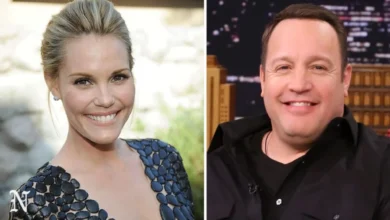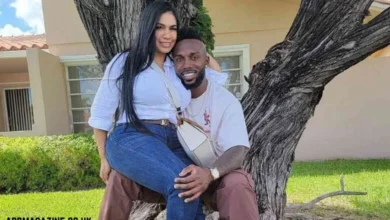The Adorable World of the Fluffy Cow: Everything You Need to Know
If you’ve ever scrolled through social media and stopped in awe at a ridiculously adorable, teddy bear-like cow, chances are you’ve seen a fluffy cow. With their irresistibly soft-looking coats, big eyes, and friendly demeanor, fluffy cows have quickly risen to internet fame—and for good reason. But what exactly is a fluffy cow? Is it a real breed? Is it a farm animal or a pet? Let’s dig into the surprisingly fascinating world of these cuddly creatures.
What Is a Fluffy Cow, Really?
Despite what their magical appearance might lead you to believe, fluffy cows are not a separate or new breed of cow. They’re real cows, just with a very specific grooming routine. Most fluffy cows are actually breeds like Highland cattle, Angus, or Chianina, which are well-known in the livestock world but gain a whole new level of attention when styled for livestock shows.
The fluff you see is a result of extensive grooming, blow drying, and brushing. Yes, blow drying. Farmers and breeders groom these cows for show competitions, where appearance can significantly impact their ranking. Think of it as the cattle version of a dog show—looks, muscle tone, and presentation matter a lot.
To maintain their fluffy appearance, the cows go through a grooming process that can take hours each day. Special shampoos are used to clean their coats, followed by drying, brushing, and often styling with oils or sprays to maintain that puffy, voluminous look. It’s a commitment—but one that results in some incredibly photogenic animals.
Popular Breeds Known for Their Fluff
Not all cows can pull off the fluffy look. Some breeds naturally have thicker or curlier coats, making them prime candidates for the full fluff treatment. Here are a few you’ll often see making waves online and at livestock shows.
Highland Cattle
Highland cows are possibly the OG fluffy cow. Originating from the Scottish Highlands, they have a thick double coat of hair designed to keep them warm in freezing temperatures. These coats are naturally long and shaggy, making them perfect for fluffing up even without intense grooming.
They’re typically a reddish-brown color, though they can also be black, white, or blonde. Highland cows are incredibly hardy, friendly, and relatively low-maintenance—apart from their dramatic hair, of course.
Belted Galloway
Nicknamed “Oreo cows” because of their distinct white belt-like stripe around their midsection, these cows have a thick coat that can also be fluffed up. Belted Galloways are more often known for their meat quality, but they’ve found their way into the fluffy cow trend thanks to their unique appearance.
They’re smaller and stockier than Highland cows, but their contrast in color makes them a favorite among show breeders and fluffy cow fans alike.
Show Calves (Crossbreeds)
A lot of fluffy cows you see online are actually show calves—young cattle bred specifically for 4-H shows or agricultural exhibitions. These calves are often crossbred to achieve ideal physical traits, including body structure and coat type. Because they’re raised with grooming in mind, their hair is regularly maintained to maximize fluffiness.
These calves are typically kept super clean, brushed daily, and treated like livestock royalty. The result? Calves that look like something out of a cartoon but are 100% real.
Why Fluffy Cows Are So Popular Online
We live in an age where cute animals basically rule the internet. From cats in costumes to dogs with expressive eyebrows, the bar is constantly being raised. So when people saw fluffy cows for the first time, it was like someone had just dropped the ultimate mic in the world of adorable animals.
The “Wow” Factor
First-time viewers of fluffy cows are often shocked to learn they’re real. That initial moment of disbelief—”Is that thing Photoshopped?”—adds to their appeal. The aesthetic is almost too perfect: soft fur, round eyes, and that ever-so-slight head tilt. It’s animal cuteness at its finest.
Viral-Ready Looks
Fluffy cows photograph exceptionally well. The soft lighting at shows, combined with their styled coats and calm demeanor, makes for perfect Instagram and TikTok content. Influencers, farmers, and animal lovers alike have leveraged this visual appeal to gain massive views and likes. It’s a formula that works every time.
A Break from the Norm
Cows are usually thought of as large, muddy animals chewing grass in a pasture. Fluffy cows flip that stereotype on its head. They’re proof that cows can be beautiful, elegant, and even a little majestic. For people who have never been on a farm, fluffy cows offer a whole new way to appreciate livestock.
Can You Own a Fluffy Cow?
It’s a common question after someone falls in love with a fluffy cow online: Can I have one? The answer is… kind of.
Fluffy cows are just regular cows with extra care, so technically, you can own one if you have the land, time, and resources. However, they’re not house pets. These animals can weigh over 1,000 pounds, need ample space to graze, and require a proper diet and routine care.
Things to Consider
- Space: You’ll need at least a couple of acres for one or two cows to roam and feed comfortably.
- Time: Grooming a fluffy cow takes dedication. If you want to maintain that signature look, you’re looking at daily brushing and weekly washes.
- Cost: Cows aren’t cheap. Aside from the initial purchase, there’s food, shelter, vet care, grooming tools, and possibly even show fees.
That said, many people across North America and Europe raise fluffy cows as part of their hobby farm or 4-H programs. They’re also popular in agri-tourism, where visitors pay to see and even pet fluffy cows.
The Bigger Picture: Livestock Shows and Agricultural Education
Fluffy cows are more than just internet stars—they’re part of a long-standing tradition of livestock showcasing and agricultural education. Young people, especially those involved in 4-H or Future Farmers of America (FFA), often raise and show these cows as part of educational projects.
Teaching Responsibility
Raising a show cow teaches responsibility, time management, and animal husbandry skills. It’s not all about fluff—students learn how to feed, clean, and train animals, as well as how to compete respectfully in livestock competitions.
Promoting Agriculture
Fluffy cows help bring attention to farming in a very positive way. In an era where fewer people grow up around agriculture, something as visually engaging as a fluffy cow can help spark conversations about animal care, farming practices, and food sourcing.
Final Thoughts: Why We Love Fluffy Cows
At the end of the day, fluffy cows represent more than just a visual novelty. They’re a charming example of how beauty, care, and tradition come together in the world of livestock. Whether you’re admiring them on Instagram, seeing one at a fair, or raising one on your own farm, fluffy cows bring a touch of wonder to the everyday.
Their popularity proves that people still have a deep appreciation for animals—and that with a little love (and a lot of blow drying), even a regular farm animal can become a superstar.



